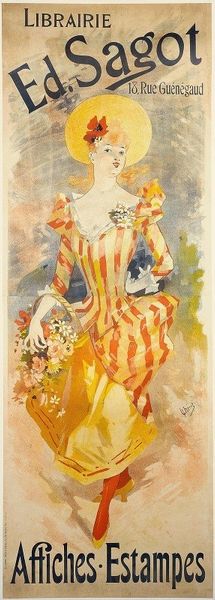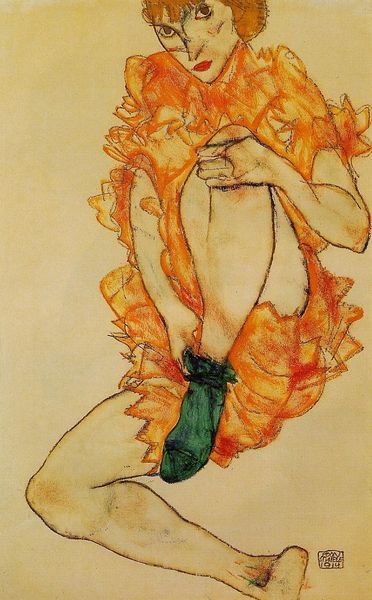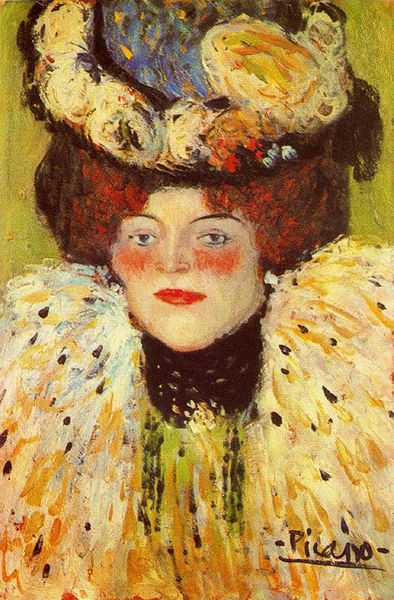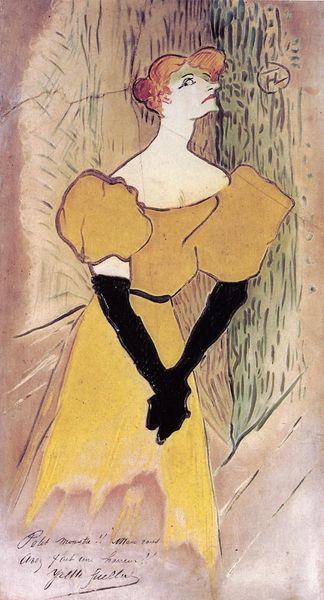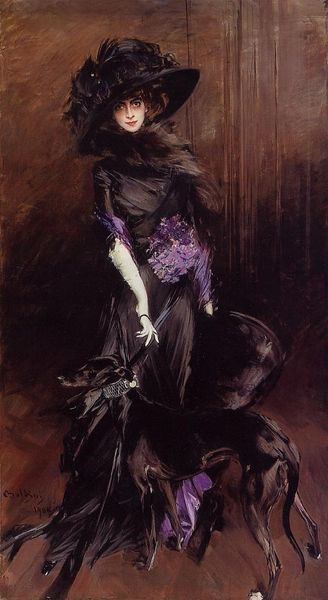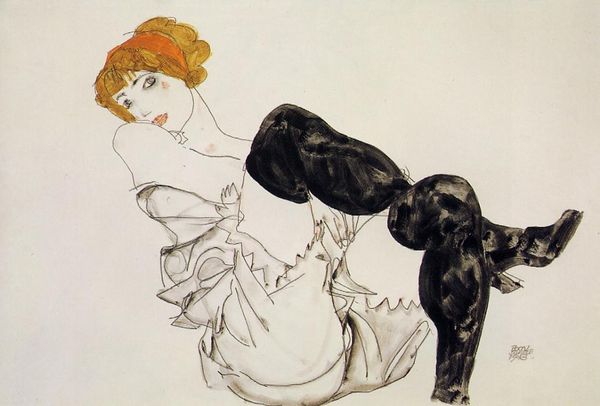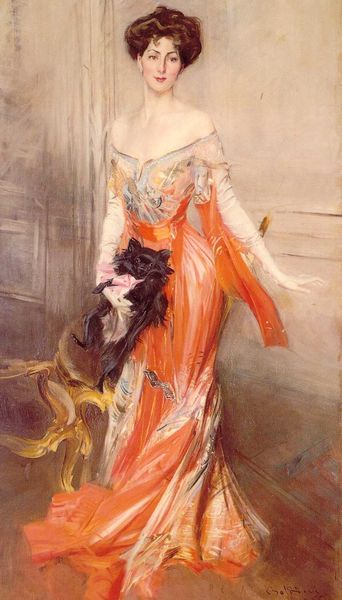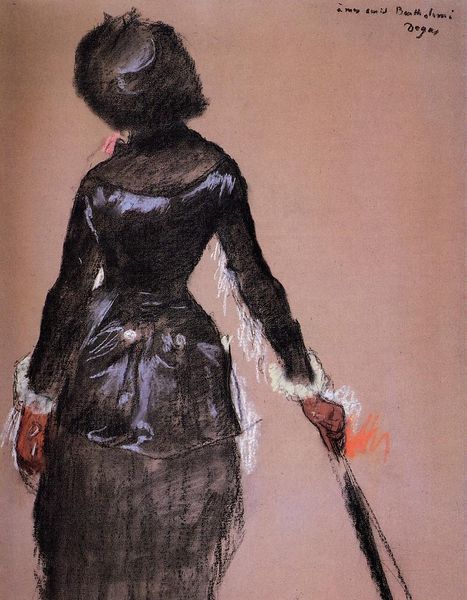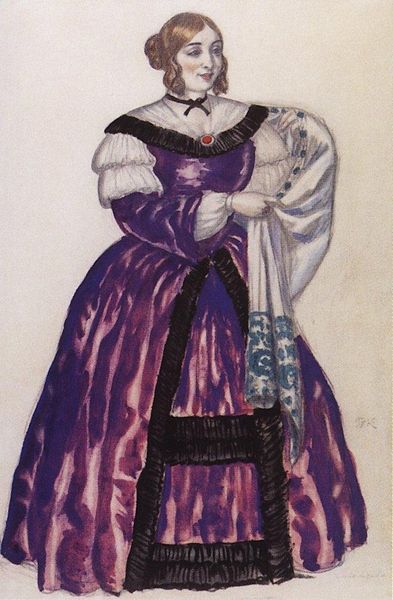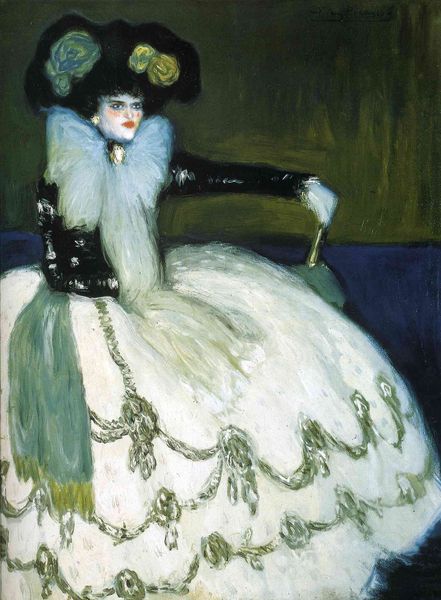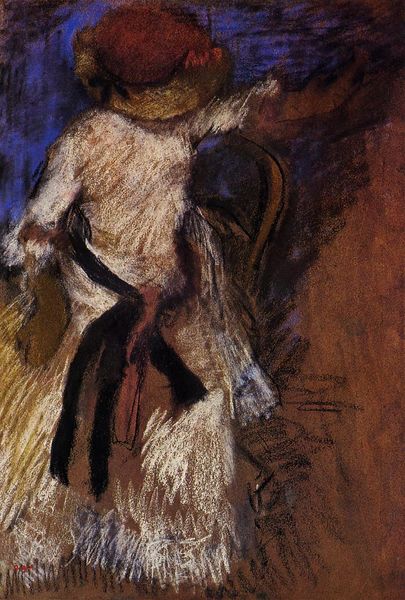
painting, watercolor
#
portrait
#
painting
#
figuration
#
watercolor
#
sketch
#
costume
#
symbolism
#
art nouveau
#
watercolour illustration
Copyright: Public domain
Curator: Boris Kustodiev's 1915 watercolor and gouache piece, "Sketch of Kupavina for Ostrovsky's play 'Wolves and Sheep'", offers a glimpse into theatrical design. Editor: My initial impression? There is something so precise, controlled about it, a carefully constructed facade almost. Curator: Absolutely, that's the core of formalism. The lines and their interactions create tension. Look at the stark contrast between the white dress, the green trims and those heavy black bows and ribbons – the stark geometries, really control your gaze. The art nouveau elements contribute to a calculated sense of luxury. Editor: Yes, the materiality of it. Knowing this was for a stage production of Ostrovsky, we should also think about class distinctions and social commentary. Kustodiev was working in a time when Russian theatre was becoming quite politicized and experimental, though there is no way for us to assess this using only the forms that the art contains. What this costume signifies matters, both for its visual appeal but also, what did the labour to make such garments look like, particularly with those flourishes that must have taken up time? Curator: And yet, I argue, the overall effect is not about explicit labor but rather the artifice. How does the figure present *herself*? I agree that the work gestures towards symbolism, but the figure is really about a series of carefully controlled lines, patterns, shapes that cohere into the very image of societal constraint. Look at how the corset pushes and the fabrics mold to fit this imposed physique, not a free form at all, yet one that strives to please. Editor: Still, Kustodiev must have chosen these fabrics and patterns with intent. These details were deliberate choices reflective of available materials but also signifying character and perhaps commenting on societal structure through fashion choices, through these textures, shades and cuts. To what degree are theatrical labor forces shaping such visions for consumption and what implications are present regarding art as a collaborative making venture. Curator: Perhaps, but the overall visual language is very much driven by stylistic constraints more broadly relevant than production in theater, one needs to understand how such components fit together, how each element helps emphasize this very rigid standard of Russian beauty at the time to start seeing into its more structural properties and visual elements in relation to Russian Art Nouveau itself. Editor: I see your perspective! It is precisely through considering how materials meet skill, craft merges to form intention, or perhaps to create the kind of commentary you imply. Thanks, that has indeed illuminated it from both aesthetic and contextual points of view! Curator: And for me too, you showed me how thinking on material contexts open ways of seeing how social forces contribute even to the purest visual spectacle.
Comments
No comments
Be the first to comment and join the conversation on the ultimate creative platform.

